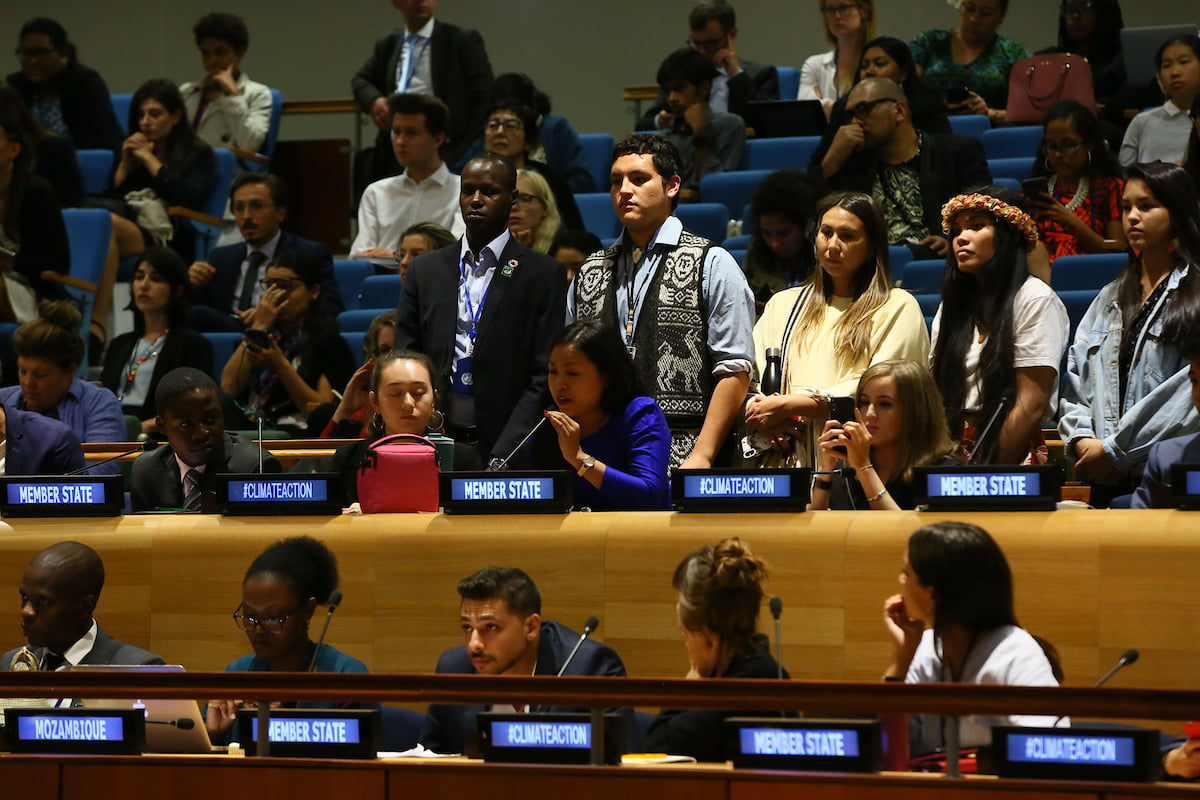At the United Nations, small island states are often the countries that demand the most ambitious outcomes from climate negotiations. These are low lying countries that are most vulnerable to climate change, so when they speak during UN gatherings on climate, their voice can carry a powerful moral force. They did not emit the pollutants that are causing climate change, but climate change threatens their very survival as countries. Many of these countries are one major storm away from devastation; and one small rise in sea levels away from total extinction.
In climate negotiations, these countries band together under the rubric of the Alliance for Small Island States in order to pool together resources and stake a common position. Still, these countries, which include Caribbean countries and islands in the South Pacific, like Kiribati and Tuvalu, are generally poor and very small. They do not carry much political heft with major powers, which can help explain why their moral arguments have not been sufficient to sway major powers to adopt their high ambition agenda. They may speak with a profound moral voice, but their political power is lacking.
This has been one of the stubborn political dynamics of UN climate talks that has stymied action on climate commensurate to the scale of the problem: the most powerful moral voices and those with the most to lose, have had little political power to wield.
But there is now a noticeable shift in this dynamic, thanks to a budding youth movement.
Like the Small Island States, young people add a profound moral voice to debates on climate change. And like the Small Island States, they are not responsible for climate change today but are nonetheless forced to live with the consequences of actions taken by others. But unlike small island states this movement can potentially yield enormous power.
The United Nations is trying to harness the power of this movement to spur meaningful action on climate change


Greta Thunberg is one face of this movement, but far from the only one. These young people, including millions who marched in their cities and towns during the September 20th climate strike, are bringing the same kind of moral arguments around extinction and survival as the small island states have been doing since 1990, when the ASOIS first formed. But unlike the small island states, this movement has the potential to wield significant political power.
What is interesting is the United Nations — in particular the UN Secretary General — are not passively observing this political force, but are actively working to nurture this movement as a political force in the service of implementing the Paris Climate Accord. This was evident on Saturday, September 21 during the first-ever Youth Climate Action Summit. Some 600 young climate activists from around the world to make demands on the kinds of leaders who typically occupy these halls.
This was an event organized by the Secretary General, and in opening remarks at the summit, he billed himself as the “keynote listener.” But he he did identify the movement as holding potential to force leader’s to action. “When I started two years ago, I felt very discouraged in relations to climate action…there was a kind of laisez-faire attitude,” Antonio Guterres said, sitting next to Greta Thunberg. “Then all of a sudden I started to feel there was momentum that was gaining and this was largely due to the youth movement that started a dynamic impulse around the world.”
The UN’s Youth Climate Summit is a deliberate effort by the Secretary General to promote this movement ahead of a major summit on climate change on Monday, and make their presence known and felt as world leaders come to the UN days later for high level meetings. “When I listen to Japanese politicians that are there, I wants to see what they are promising and hold them accountable,” Mayumi Satoo, a 24 year old Japanese activist told me.
Embedding a burgeoning social movement inside the halls of the United Nations in order to spur action by world leaders itself is a recognition that this movement is a political force — and one that seems to be growing stronger by the day.
“They are robbing the futures from us, from young people. Yet the decisions being made about our futures are largely being made without is,” Canadian activist Marina Meliandis told assembled delegates in the Trusteeship Council. “This summit is a crucial moment. Young people deserve to co-design their own futures and, honestly, you can’t do it without us.”
